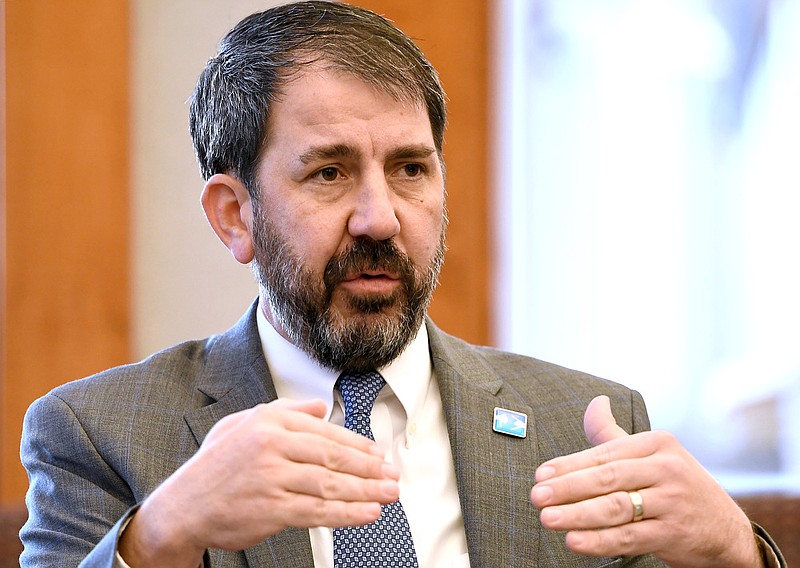It's not as if the Hamilton County School district is hiding anything.
Its annual performance summary is printed in full color and is included as part of the system's three-year update on its Future Ready 2023 action plan.
But it highlights the large gaps the system must hurdle to accomplish the goals it set for itself by the end of the 2022-2023 school year.
In 15 areas of student achievement, the district met its 2021 goals (from a 2018 baseline) in only two - the percentage of students completing one or more early postsecondary opportunities and the number of schools with a growth level of 3 or higher. And it fell below the three-year-old baseline in six areas of student achievement.
Of course, in that span of time a little thing called COVID disrupted the world and, with it, public K-12 education.
On the bright side, according to the performance summary, Hamilton County hit more of its 2021 targets in the areas of future-ready students, teachers, parents and school operations.
The district's three-year update was made available in conjunction with the annual State of the Schools address, which was offered Tuesday night by new Superintendent Dr. Justin Robertson.
On Monday, in an editorial board meeting at the Times Free Press, he and Deputy Superintendent Dr. Sonia Stewart explained in general terms how they hoped to push the district forward.
The schools' focus, Robertson said, will be "what it will take for students to thrive."
The push, he said, will "impact everything we do."
Doing whatever is necessary for each student to thrive, Robertson said, is akin to "moving equity work forward" and is "equity in action."
To help organize that drive, he said, he will be moving Chief Schools Officer Dr. Neelie Parker to chief of opportunities and access, where she will examine departments throughout the system, determine how they might be re-imagined and shift assets to accomplish the work.
The work to be done is highlighted in the performance evaluation.
In what the district calls its "Focus Five," by the end of the 2022-2023 school year:
* Fifty percent of third-grade English language arts students are to meet testing performance goals. As of the three-year update, only 36.8% had, an increase of only 3.1% from the 2018 baseline.
* Forty-four percent of algebra I students are to meet testing performance goals. As of the three-year update, only 21.9% had, a drop of 0.2 from the 2018 baseline.
* The average ACT composite score is to be 21.0. As of the three-year update, it was 18.9, a full point lower than the 2018 baseline.
* The graduation rate for the district is to be 90%. As of the three-year update, it was 85.5%, 1.1% lower than the 2018 baseline.
The picture also looks bleak in other areas of student achievement, where none of the other goals in grades 3-5 English language arts and math, grades 6-8 English language arts and math, and high school English language arts and math look achievable by the end of the 2022-2023 school year.
Of particular concern are grades 6-8 English language arts and math, where 2021 student scores in both areas were 6.6% below their 2018 baseline.
To help achieve some of the academic goals, the district's action plan states it will organize community early-learning initiatives to support kindergarten readiness; re-imagine middle-school supports to meet needs of students in new, innovative ways; implement math acceleration strategies for all students; deepen the impact of Summer REACH learning camps for the most academically at-risk students; increase targeted academic remediation and acceleration models through tutoring before and after school; increase classroom supports for English language learners and exceptional education students; and strengthen foundational literacy practices through the state education department's Read 360 initiative.
The public should give the district credit where it is due, though. In eight areas on the summary, Hamilton County Schools has already surpassed its end-of-2023 goals. Those areas include, as previously mentioned, the percentage of students completing one or more early postsecondary opportunities and the number of schools with a growth level of 3 or higher.
The additional achieved goals include the amount of post-secondary scholarship awards, the one-year retention rate for teachers, the percentage of teachers meeting annual growth standards per the Tennessee Value-Added Assessment System (growth scores), total miles between safety incidents, average number of days to complete maintenance work orders, and average number of days to close technical support tickets.
The district also looks on track to achieve its student, teacher and parent satisfaction goals, and perhaps its teacher absenteeism rate by the end of the 2022-2023 year.
If each student is able to thrive through the changes and specific focus that Robertson and his team have in mind, the aforementioned goals may not necessarily be reached but they should be more closely in sight.
